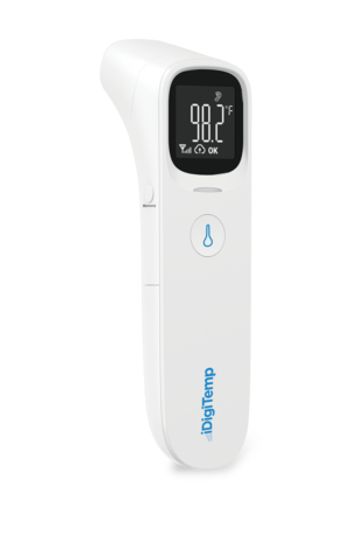
Identifying ‘white coat hypertension’ through remote patient monitoring
Understanding the different types of hypertension and leveraging remote patient monitoring can mean the right care intervention.
Whether it's fear of the unknown, worry about being criticized for habits impacting overall health, or an aversion to needles and other tests, it's not unusual for doctors' visits to trigger anxiety and stress. Along with these reactions can come racing heart rates and spikes in high blood pressure that only happen while at the doctor's office.
We all may experience these fluctuations from time to time. But about
While it may seem like a benign occurrence, studies have shown that it may not be. For example, these patients may be more susceptible to
Understanding each of these different types of hypertension and leveraging remote patient monitoring to determine which one each patient has is important to outline the right intervention for the next level of care.
Making a Diagnosis for White Coat Hypertension
Given the potential health consequences, it is important to first understand why patients have high blood pressure in the doctor's office, so we can offer the correct treatment – whether that's a referral to another specialist to further assess the cause of white coat hypertension, or ensuring the patient is not on medication for sustained hypertension if in fact they only have in the clinic. One of the best ways to make this determination is to get blood pressure readings from patients at times when they’re not in a medical setting. For example, remote patient monitoring (RPM) using home blood pressure monitors for checks throughout the day or ambulatory blood pressure monitors worn 24/7 hours, can allow patients to take blood pressure readings while at home, and throughout their daily routine. These readings are then compared to those taken in the doctor’s office.
This is one approach being taken at Green River Medical Center (GRMC) in Utah – and with great results.
If a GRMC patient had blood pressure over 130/80 or 140/90 at two visits, the center would offer them a blood pressure monitor to use at home for two weeks. At the end of that time, they return for a follow-up visit. If there are no hypertensive blood pressure measures, patients are then identified as having white-coat hypertension, in which the next step is to discuss lifestyle adjustments that could be made to help manage stress – both inside and outside of a doctor’s visit. This also allows staff to better determine whether there needs to be a medication change or diagnostic evaluation, which ultimately boosts outcomes for individuals.
A Strong Case for Remote Patient Monitoring
GRMC's process for making a diagnosis of white coat hypertension underscores the importance of RPM for getting a clearer view of patients' every-day health.
One study conducted by researchers at the Autonomous University of Madrid found that the
A Remote Patient Monitoring Success Story for White Coat Hypertension
Much like the results of the study, GRMC’s implementation of RPM devices has helped its providers better diagnose and treat patients with hypertension, whether it’s sustained or a response to stress and anxiety. Patients with suspected hypertension are then able to take their blood pressure readings at home in a less stressful environment and transmit them to their healthcare providers, resulting in more accurate readings.
GRMC has also seen improved trust from patients as a result of implementing RPM. For example, the center has found that by providing patients with a connected BP cuff for home readings prior to the visit, often times it is the clinic and the circumstances of the visit that raise a patient’s blood pressure, not essentially hypertension. This is especially crucial for patients with commercial driver’s license, such as truckers, who could
Understanding a patient’s health outside the four walls of the doctor’s office – and asking questions such as, “is this really hypertension, or do you just not like getting a check-up?” -- is critical to delivering the best possible care and achieving optimal outcomes. RPM is a central tool that arms providers with these critical insights, and ensures that providing appropriate care, whether it’s for sustained hypertension or the effects of white coat hypertension. After all, the purpose of healthcare is to enhance quality of life by enhancing health. It’s up to us to leverage all the tools in our toolbox to make this happen.
Newsletter
Stay informed and empowered with Medical Economics enewsletter, delivering expert insights, financial strategies, practice management tips and technology trends — tailored for today’s physicians.








